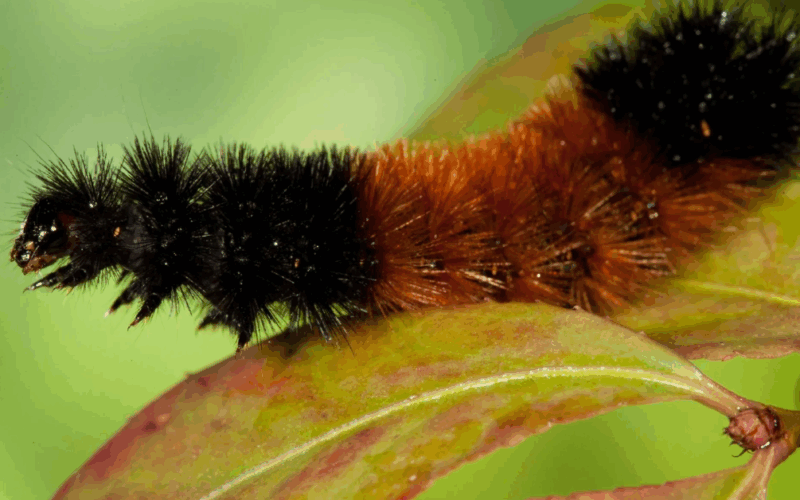Southern Indiana – As the leaves turn and temperatures dip, many Hoosiers turn their eyes to nature, searching for clues about the coming winter. From fuzzy woolly bear worms to the toughness of onions, Indiana’s traditional weather lore offers fascinating insights into how nature signals the severity of the cold months ahead.
While some might dismiss these signs as old wives’ tales, these natural indicators have been part of Indiana’s culture for generations. Let’s explore some of these intriguing nature signs and what they may reveal about the winter weather to come.
Woolly Bear Worms as Winter Weather Forecasters
One of the most popular and beloved Indiana nature signs is the woolly bear worm. These fuzzy caterpillars are thought to predict winter severity based on the coloration of their bands:
- Wide rusty-brown bands indicate a milder winter.
- A predominance of black fur suggests a harsh winter with colder conditions.
- Other colored caterpillars like white or yellow are not true woolly worms and generally aren’t considered for weather predictions.
Despite the popularity of this folklore — supported somewhat by sources like the Farmer’s Almanac — scientists caution that existing studies lack enough data to confirm these predictions reliably. Nevertheless, spotting woolly worms each fall remains a cherished tradition for many Indiana families.
Stubborn Onions and Tough Fruits: Signs of a Harsh Winter
Local farmers in Indiana have long observed another natural sign: the texture of fall produce. If it takes extra effort to cut onions, bite into apples, or shuck corn, it’s believed this toughness signals that plants are preparing for a severe winter. This “armoring up” mechanism is nature’s way of protecting fruits and vegetables against cold weather.
As one Hoosier humorously notes, “I’d rather face a snowstorm than wrestle with a stubborn onion!”
Spiderwebs and Approaching Frost
Another lesser-known indicator lies in the behavior of local spiders. When their webs appear large and thick in the fall, it often precedes a bitter cold snap and frost. Indiana residents who notice these abundant webs know that chilly weather is likely imminent.
Other Quirky Nature Signs Hoosiers Watch For
Indiana’s weather folklore is rich with many unique signs beyond worms, onions, and webs. Some popular ones include:
- Early August fog often foretelling early snow.
- Thicker squirrel tails signaling upcoming cold and snowy days.
- First snow sticking around for three days predicting a long, snowy season.
- Crows flying low or high indicating approaching wind conditions.
- Various moon and sky patterns believed to forecast frost, rain, or fair weather.
Wisdom Passed Down Through Indiana Weather Lore
Many of these proverbs and sayings have been echoed by generations, capturing Hoosiers’ connection with nature’s rhythms. Examples from Weather Wiz Kids and local stories include:
“Clear moon, frost soon.”
“Red sky at night, sailor’s delight. Red sky in morning, sailor’s warning.”
“Yellow streaks in sunset sky, wind and daylong rain is nigh.”
These sayings reflect an intuitive understanding of weather patterns, often providing useful guidance for farmers, travelers, and families.
What This Means for Indiana’s Winter 2024-2025
While these natural signs are fun and culturally significant, modern meteorology still relies on scientific data for accurate winter forecasts. However, integrating folklore with contemporary predictions can enrich the way we prepare and connect with the seasons.
For more detailed and updated forecasts, including first frost dates for Indiana, Kentucky, and Illinois, it’s advisable to check trusted meteorological sources.
Key Takeaways on Indiana Nature Winter Predictions
- The color patterns on woolly bear worms are a popular, though not scientifically proven, method of predicting winter severity.
- Hard-to-cut onions and tough fruits may signal plants bracing for cold weather.
- Thick spiderwebs indicate frost and dropping temperatures ahead.
- Quirky folklore such as squirrel tails and crow flight patterns add to Indiana’s rich tradition of watching nature for weather clues.




